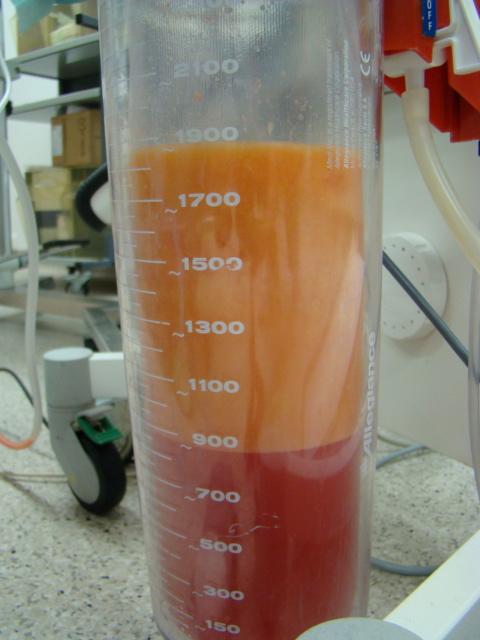It’s happened to most of us: at some point in our lives, we’ve dreaded those extra pounds. So wouldn’t we all want a procedure that can remove excess fat in a single afternoon? Shouldn’t we all try a little liposuction?
Well, the scientific consensus is that, if done right, such procedures should be safe — but they’re never without risk. They’re also not a substitute for weight loss, experts agree.

Liposuctions are procedures that involve physically removing adipose tissue (fat) from our bodies, usually through some form of suction (hence the name). Make no mistake, however — it is considered to be a type of major surgery and not something you should consider lightly.
Such interventions are not and should not be considered an alternative to weight loss approaches such as dieting, exercise, or bypass surgery.
What’s it good for
Liposuction is used to remove fat that has been unresponsive to dieting or exercise and will remove less weight and centimeters than other approaches.
Liposuction begins with the administration of certain drugs, most commonly local anesthesia, general anesthesia, and intravenous sedatives. Then, a small incision is made in the skin, through which a diluted anesthetic solution is infused. The role of this infusion is to reduce local bleeding and trauma to local tissues.
A thin hollow tube — the cannula — is then inserted into the hole and used to loosen fatty tissues using back-and-forth motions. This fat is then removed using a syringe attached to the cannula or a surgical vacuum. In general, the skin’s natural elasticity is enough to make it stretch neatly over the (now slimmer) areas.
Not all the fat on our bodies always responds to exercise or diet. Liposuction can be used as an alternative in areas such as the abdomen, chest, back, our necks, chins, hips, or on our limbs. It has also been used medically, to remove adipose tissue in other areas of our bodies, for example in breast reduction interventions. However, its chief use remains cosmetic.
Our bodies use fats to store excess nutrients and energy from our food. Fat is made up of adipose cells that multiply and increase in size as we pack on the pounds. Liposuction physically removes these cells from the body; adipose tissue isn’t very strong or knit together, meaning this can be done with relatively little intrusive intervention.
Still, it does place a lot of strain on the body, and it is a major surgical intervention, meaning that candidates for liposuction need to be in good health and not have pre-existing conditions that could imperil their life during surgery. Doctors will need to review your medical history and lifestyle to assess the risk beforehand. Medication or ongoing treatments can also factor in: according to the Mayo Clinic, treatments with blood thinners or NSAIDs (nonsteroidal anti-inflammatory drugs), for example, need to be interrupted at least three weeks prior to such an intervention.

The risks involved
Like anything that’s supposed to quickly alter your body, there are risks involved in liposuction. A study published in 2000 found that between 1994 and 1998, “about 20 in every 100,000” patients who underwent liposuction died, making it more deadly than traffic accidents over the same timeframe. A statement issued by the American Society for Aesthetic Plastic Surgery (ASAPS) following the study explains that “poor patient health” was the main driver of these deaths, followed by the removal of too much fat, excessive use of fluid or anesthesia during the procedure, and performing multiple interventions in a single session.
Although patient outcome has been steadily improving, such findings do go to show that liposuction is in no way devoid of risks.
“As a result of the task force’s investigation and recommendations, many plastic surgeons have altered their approach to [liposuction]. Consequently, since about 1998, we have seen the rate of serious complications plummet,” ASAPS president Fritz E. Barton Jr., MD, said at the time, according to WebMD.
But death is, understandably, the worst-case scenario. Other dangerous complications that can arise from liposuction include accidental internal punctures with the cannula (which require medical intervention), infection (which are rare but still possible), a fat embolism (blockage of blood vessels in the heart or lungs with a bit of dislodged fat), adverse reactions to the anesthetic lidocaine (also rare), or potentially-fatal kidney, heart, and lung issues due to rapid shifts in fluids inside the body.
Milder side-effects include temporary numbness or irritation of the nerve bundles in the treated area, fluid accumulation in the body, or “contour irregularities”. The latter consists of “bumpy, wavy or withered [skin] due to uneven fat removal, poor skin elasticity, and unusual healing,” according to WebMD, and can be temporary or permanent. While both the characteristics of the patient and the quality of the procedure play a role here, there are ways to address loose or saggy skin following liposuction.
And now, to the meat of it
The thing to remember here is that liposuction isn’t, has never been, and never will be a weight reduction method. It is a type of plastic surgery meant to ‘contour’ — to quickly change the shape of an individual’s body.
There is a limit to how much excess fat can be safely removed during a liposuction procedure, and removing more than that carries very real risks for patients.
Furthermore, unless also backed by changes in habits, the fat removed through liposuction can and will come back surprisingly quickly — the procedure in no way guarantees that the results will be maintained over time. It’s important to note, also, that the procedure can only remove subcutaneous fat (the one immediately below the skin), not visceral fat (the one deeper in the body that surrounds our organs, our “viscera”).
Subcutaneous fat is both easier to shed and less unhealthy than visceral fat. It is also much less involved in our metabolism. So liposuction can only address part of the least damaging type of body fat.
Liposuction can help change the superficial aspect of your body, but it will not make you healthier — if anything, it’s a very demanding procedure on our bodies, just like any other surgical intervention. It definitely has its role and, if done right, can be safe. There isn’t any silver-bullet against obesity or excess weight, and even if you do decide to make a liposuction appointment, you will need to put the effort in to maintain that weight loss.









